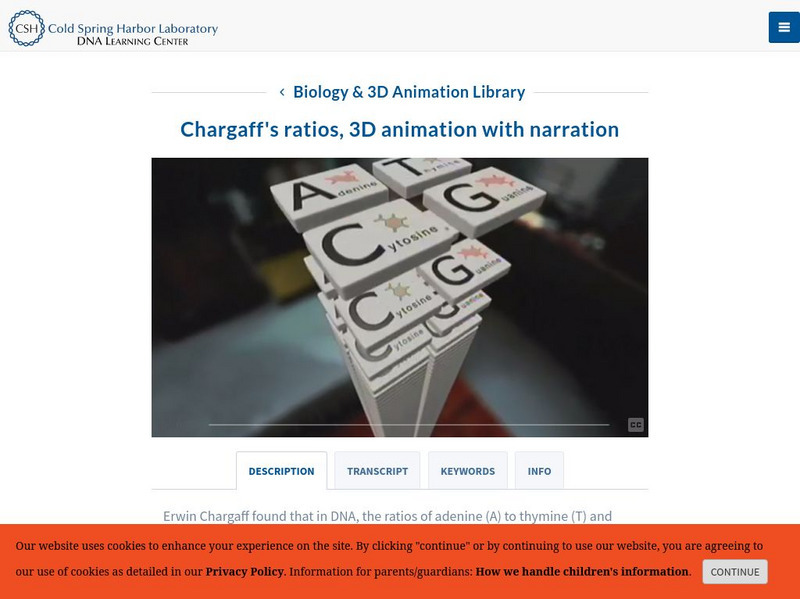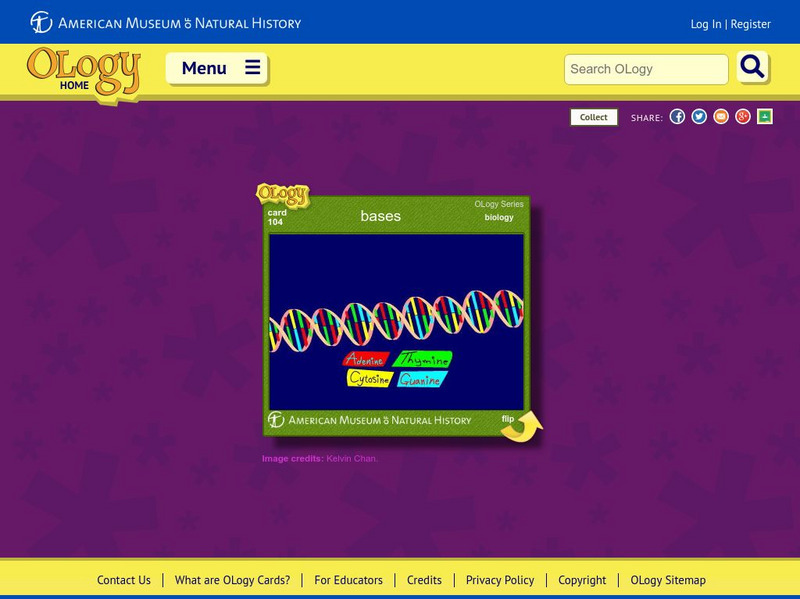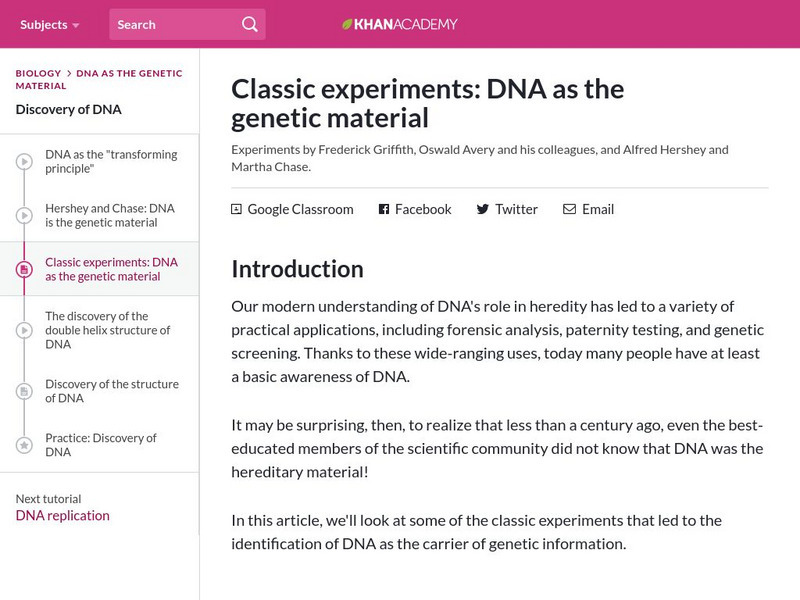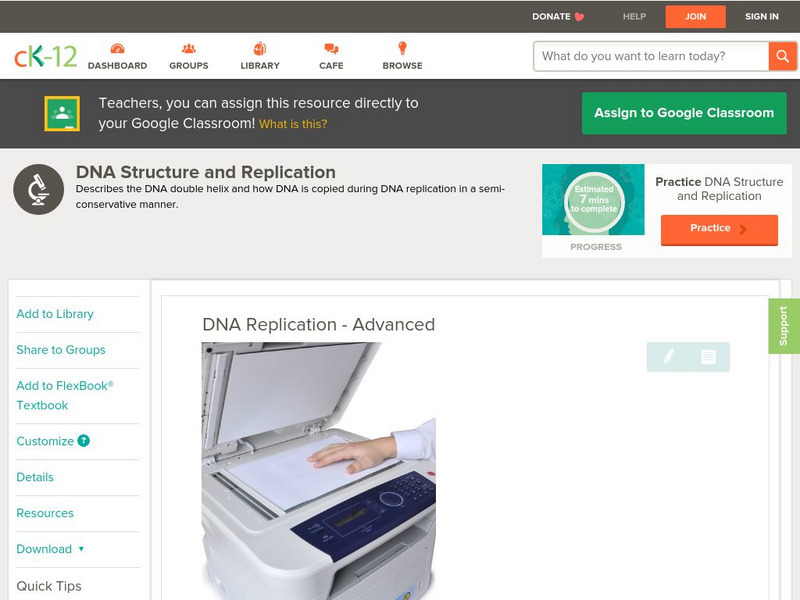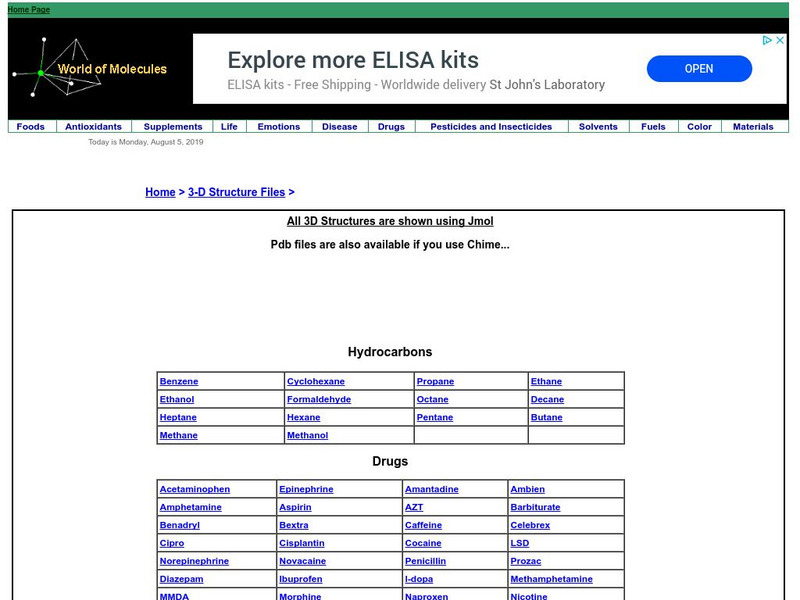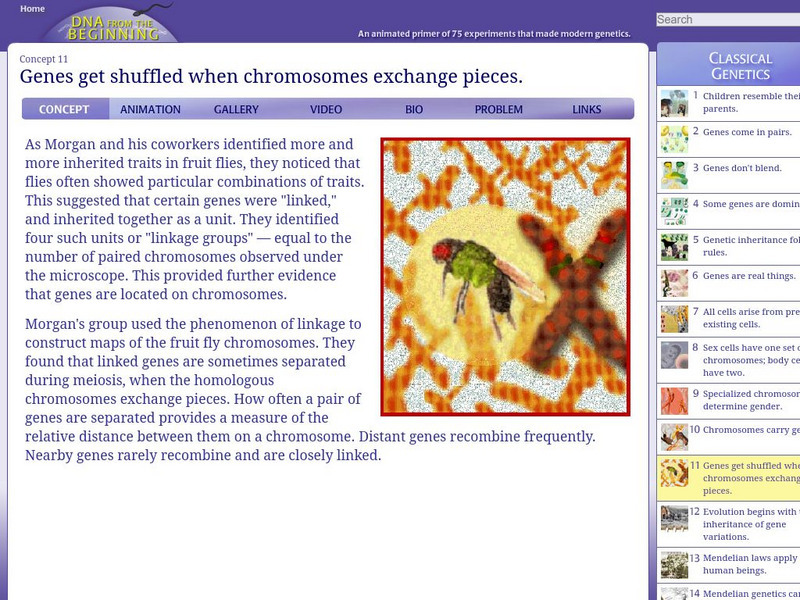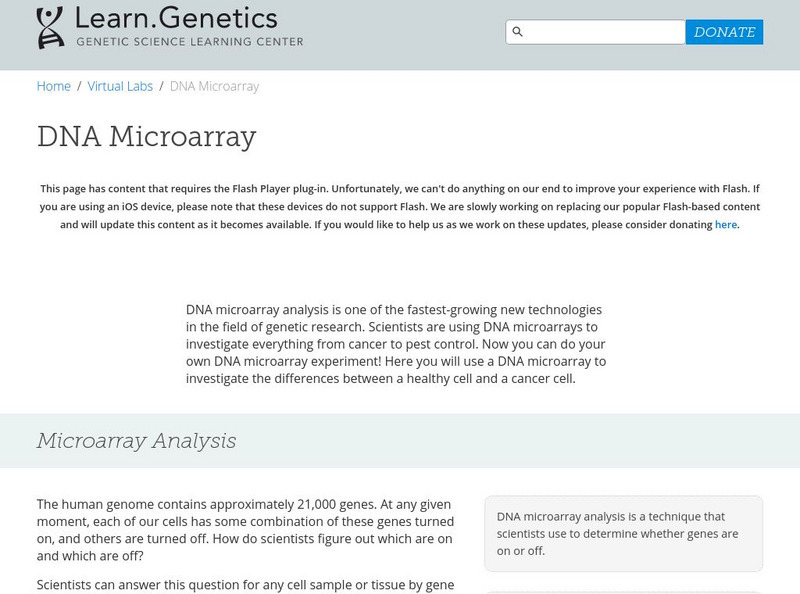Hi, what do you want to do?
Cold Spring Harbor Laboratory
Dolan Dna Learning Center: Dna Molecule: Chargaff's Ratios
Learn about base pairing in DNA, and how the ratios of adenine to thymine and guanine to cytosine are equal. [0:47]
Cold Spring Harbor Laboratory
Dolan Dna Learning Center: Dna Molecule: Triple Helix
A description of how the triple-helix DNA model was a precursor to the accepted double-helix model of our DNA. [0:27]
Alabama Learning Exchange
Alex: Dna Technology Project
Students will research current uses for DNA technology. Students identify a variety of ways that DNA technology can be used. Finally, the students create a DNA Technology project using technology. This lesson plan was created as a result...
American Museum of Natural History
American Museum of Natural History: Dna Base Pairs O Logy Card
Flip this interactive OLogy card to find questions and answers, fast facts, and other bite-size pieces of information to help you understand DNA bases A, T, G, and C.
Famous Scientists
Famous Scientists: James Watson
Learn about the life and great discoveries of James Watson in this article. Learn about his most famous discovery of the molecular structure of DNA.
Khan Academy
Khan Academy: Classic Experiments: Dna as the Genetic Material
Learn about the experiments by Frederick Griffith, Oswald Avery, Alfred Hershey, and Martha Chase that led to the discovery of DNA as the genetic material.
Nobel Media AB
The Nobel Prize: James Watson Biographical
Read about James Dewey Watson, the co-recipient of the 1962 Nobel Prize in Medicine for his work with Franice Crick on decoding the structure of DNA. This article includes information on both Watson's personal life and public career.
Other
North Dakota State: Dna Structure
A brief text overview of DNA structure and an introduction or mention of the various forms of DNA.
CK-12 Foundation
Ck 12: Life Science: Dna Structure and Replication
[Free Registration/Login may be required to access all resource tools.] DNA must replicate (copy) itself so that each resulting cell after mitosis and cell division has the same DNA as the parent cell. DNA replication occurs during the S...
University of Missouri
University of Missouri: Biotech Adventure: Dna Structure
DNA Helix, DNA structure, DNA bases, Nucleotides, strands of DNA, Bonding in DNA, and bonding between bases are the topics delved into in this thorough site.
CK-12 Foundation
Ck 12: Life Science: 13.5 Dna Structure and Replication
Learn about DNA structure and replication.
CK-12 Foundation
Ck 12: Dna Replication
[Free Registration/Login may be required to access all resource tools.] This concise article complete with labeled diagrams, key vocabulary terms, and review questions illustrates DNA replication.
Other
World of Molecules: 3 D Structure Files
Investigate the three-dimensional structure of various molecules- both organic and inorganic.
Science Museum, London
Science Museum: Making the Modern World: Dna: Structure and Function
The learning module helps students gain a deeper understanding of the structure and function of DNA.
Cold Spring Harbor Laboratory
Dna From the Beginning: Chromosome Mapping
Alfred Sturtevant will describe his gene mapping research with fruit flies. This animated explanation will show how he bred fruit flies to determine the proximity of genes.
BiologyWise
Biology Wise: Why Is Dna Important
Explains what DNA is and how much information lies stored in its structure, and discusses the many applications of the science of DNA in agriculture, forensic science, human genetics, etc.
National Health Museum
Access Excellence: Wolf Pack in a Bottle: Dna Simulation
This lesson plan can be used to illustrate the principle of electrophoresis without the equipment. Paper chromatography can be used to separate dye just like electrophoresis will separate DNA. The lab also covers DNA analysis for an...
University of Arizona
Biology Project: Cell Cycle and Mitosis Tutorial: Dna Basics
Tutorial on DNA basics that goes along with an online quiz over the material. Use the naviagation buttons at the bottom of the page to go to the quiz over the material.
University of Illinois
University of Illinois Urbana Champaign: Theoretical Biophysics Group
Excellent and comprehensive site created by the University of Illinois at Urbana-Champaign, Beckman Institute for Advanced Science and Technology. The site has resources about and links to information on a large number of topics in...
University of Utah
University of Utah: Dna Mircoarray Virtual Lab
This interactive lab will enhance learning about DNA by virtually translating a gene.
Cold Spring Harbor Laboratory
Dna From the Beginning
At DNA from the Beginning, choose from classical genetics, molecules of genetics, genetic organization and control. Each concept is explained through animation, an image gallery, video interviews, biographies and links.
Other
Biotechnology and Biological Sciences Research Council: Discovering Dna
This 51-page booklet is an excellent collection of activities for 11- to 14-year-olds to teach them about DNA. It was designed by Dr Sue Assinder, a molecular geneticist.
Department of Defense
Do Dea: Biology: Unit 3: Cell Structure
In this third unit of a Biology course, students learn about cells and cell structure. They compare prokaryotic and eukaryotic cells and learn about the specialized structures in a cell and what their functions are. They will also learn...





